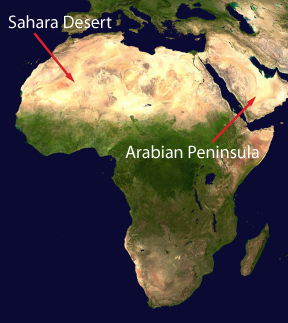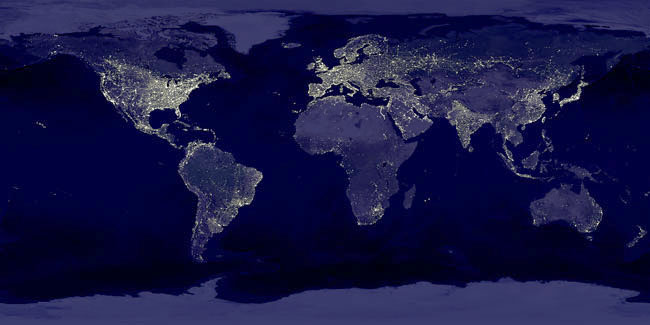|
The Arabian PeninsulaThe Arabian Peninsula is not far from India, but the cultures of the two areas are very different. The arid conditions and sparse vegetation of some areas of the peninsula force herdsman to frequently move in order to provide fresh grazing areas for their animals; this has led to the development of nomadic cultures. Nomadic cultures are quite different from many other cultures. The unique needs of the herdsman have resulted in a unique culture. For example, the continual movement means that portable housing must be used rather than the construction of permanent shelters. Access to seaports is another factor that greatly affects the cultural and economic development of a country. Countries that are landlocked, which means they have no coastlines or seaports, are among the world's poorest countries. This is because they are forced to transport all the goods they produce overland, rather than by waterways. If the countries are poor, there is often very little infrastructure, such as highways and railroads. These countries find themselves in a difficult situation; they are poor because they do not have access to good transportation systems, and their poverty prevents them from building expensive transportation systems.
Figure 8.4.7 is a series of photographs of the earth at night prepared by NASA. This illustration is an interesting way to look at the earth's regions. It shows all of the earth's landmasses at night. As you learned in an earlier lesson, the majority of the world's people live near the coasts; therefore there is a greater need for electricity along coastal regions. However, notice the United States and Europe; in both cases nearly the entire continent is lit up with electric lights. Now look at South America and Africa. These two continents are divided into many small countries, much like Europe, but as you can see only small portions of the continents are lit up with electrical power. When compared to the US and much of Europe, the GDP's for Africa and South America are generally lower. The lower income level not only prevents these areas from building roads and transportation systems, it also hinders the installation of electricity and other systems that we often take for granted. You might notice that Canada, which is above the US, is not well-lit. This country has a high GDP, but it also has a proportionately small population in comparison to its large landmass. This enables the population to live mostly in the more desirable areas. For instance, the northern portion of Canada is very cold and attracts fewer people than the warmer, southern portion of Canada.  
|
About Us | Terms of Use | Contact Us | Partner with Us | Press Release | Sitemap | Disclaimer | Privacy Policy
©1999-2011 OpenLearningWorld . com - All Rights Reserved



